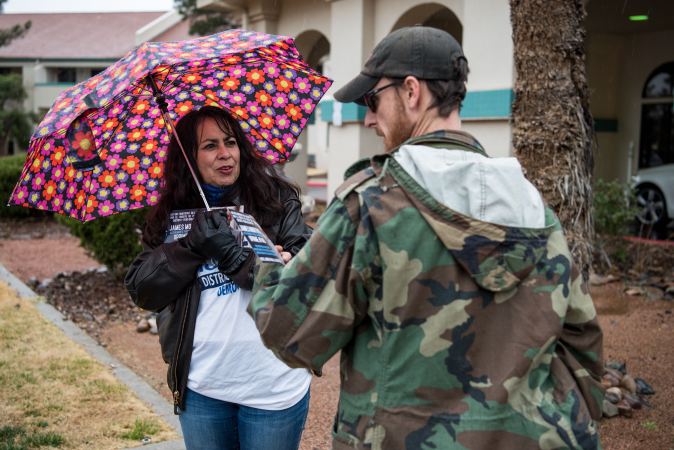Here’s Where the Latino Vote Is at After Super Tuesday

Voters wait in line to cast their ballots on March 3, 2020 in San Antonio, Texas. Photo by Edward A. Ornelas/Getty Images
Every election cycle, an iteration of this headline—in which the potential, or definitive, impact of the Latino vote is assessed with a tinge of unwarranted surprise—is published during primaries. This year, it was “A Sleeping Giant Awakens.” In 2016, it was “This is the year of the Latino vote.” This time, the difference is most of everyone understands we’re not a potentially impactful demo—Latinos have always played a decisive role in U.S. elections. Now, we are increasingly aware of that power. On Tuesday, a majority of Latinos voted in favor of Bernie Sanders as the Democratic candidate to run against Trump. But, the Latinx vote is still undecided overall—a reminder that the Latinx vote is far from a monolith.
Two-thirds of Latinx eligible voters live in just five states, according to Pew Research Center. Those states are California, Texas, Florida, New York and Arizona, in quantitative order. On Tuesday, California and Texas were amongst the 14 states in this election cycle’s first Primary Election Day.
In California—which has more immigrant eligible voters than any other state—49% of Latinx voters voted for Sanders compared to runner-up Joe Biden, who took 19% of the voting bloc. In Texas, although Biden won by a slim 2% majority, 45% of Latinos voted for Sanders compared to the 24% who clocked in for Biden, according to NPR. In fact, Sanders won the Latinx vote in just about every other state with the exception of North Carolina, according to Politico.
Still, Biden was the day’s winner overall. On Wednesday morning, billionaire and former New York Mayor Michael Bloomberg dropped out of the race and endorsed Joe Biden. He is the third candidate to do so in the last week alone, likely impacting moderates who changed their minds last minute.

Meanwhile, despite Elizabeth Warren’s attempt to ramp-up her appeal to Latinx voters over the last couple of months—with a specific focus on Latinas—the candidate with many-a-plans took a hit across the board, losing in her home state of Massachusetts. She specifically failed to make a dent in the Latinx voting bloc, with less than 10% of the overall.
As primaries continue, states like Florida and Arizona will be key in determining who the Democratic candidate is.

The challenges extend beyond candidates’ failure to fully tap into the power of the Latinx vote early on in their campaigns. Similarly to every cycle before it, this year proves that the system is designed to repress the voices of minority communities.
“If you’re in line to vote, stay in line!” Sanders encouraged followers at 11:05 p.m. on Tuesday night.
For just about ever now, voter suppression has played a role in election outcomes. This year, from strict identification requirements as well as fewer polling sites and poll workers per voter in counties with larger minority populations.
On Tuesday, hundreds of voters were held in line for over three hours in a yet again flagrant instance of voter suppression. Many of them took to Twitter to express their frustration. Mexican-American author Shea Serrano, who lives in San Antonio, commented on the mile-long line in Houston.
“I live in a historically white neighborhood,” he wrote. “ It took maybe 10 minutes to vote. This shit ain’t an accident.”

In a lot of ways, yesterday felt comparable to 2016. From issues at the polls in predominantly minority communities to a divide amongst Latinos, there’s still work to be done ahead of the next set of primary elections (dates by state can be found here) and the general election.
In 2016, a majority of Latinos voted for Hillary Clinton and more of us turned out than ever before. About 4 million more, to be exact. That number has been steadily on the rise since, evident in last year’s midterms and specific cases like the successful ushering in of progressive folks like Alexandria Ocasio-Cortez. Needless to say, showing up is the requirement. To show up prepared, with the collective’s best interest in mind, is the hope.